Zag ElSayed
TemporalAugmenter: An Ensemble Recurrent Based Deep Learning Approach for Signal Classification
Jan 13, 2024Abstract:Ensemble modeling has been widely used to solve complex problems as it helps to improve overall performance and generalization. In this paper, we propose a novel TemporalAugmenter approach based on ensemble modeling for augmenting the temporal information capturing for long-term and short-term dependencies in data integration of two variations of recurrent neural networks in two learning streams to obtain the maximum possible temporal extraction. Thus, the proposed model augments the extraction of temporal dependencies. In addition, the proposed approach reduces the preprocessing and prior stages of feature extraction, which reduces the required energy to process the models built upon the proposed TemporalAugmenter approach, contributing towards green AI. Moreover, the proposed model can be simply integrated into various domains including industrial, medical, and human-computer interaction applications. Our proposed approach empirically evaluated the speech emotion recognition, electrocardiogram signal, and signal quality examination tasks as three different signals with varying complexity and different temporal dependency features.
CautionSuicide: A Deep Learning Based Approach for Detecting Suicidal Ideation in Real Time Chatbot Conversation
Jan 02, 2024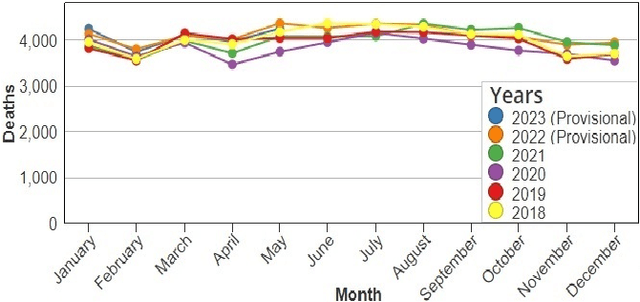
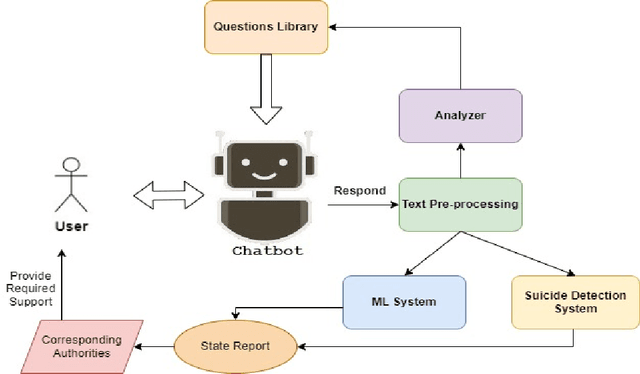
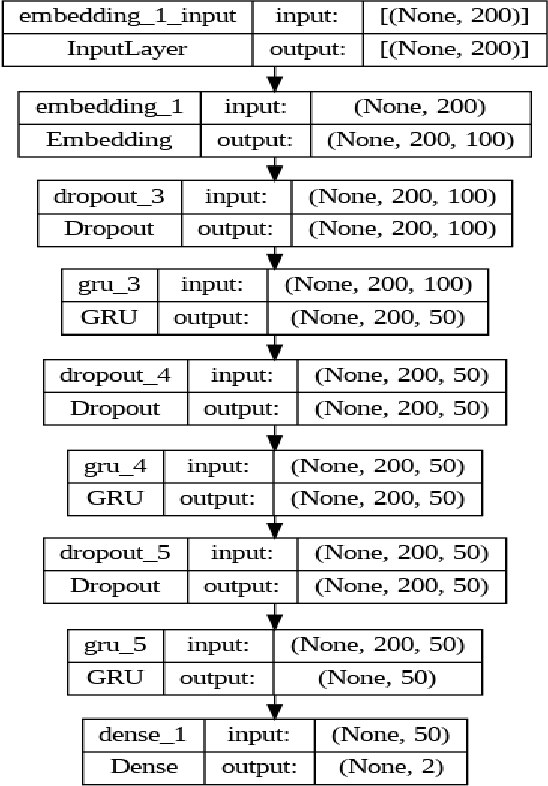
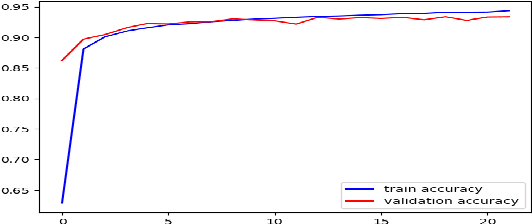
Abstract:Suicide is recognized as one of the most serious concerns in the modern society. Suicide causes tragedy that affects countries, communities, and families. There are many factors that lead to suicidal ideations. Early detection of suicidal ideations can help to prevent suicide occurrence by providing the victim with the required professional support, especially when the victim does not recognize the danger of having suicidal ideations. As technology usage has increased, people share and express their ideations digitally via social media, chatbots, and other digital platforms. In this paper, we proposed a novel, simple deep learning-based model to detect suicidal ideations in digital content, mainly focusing on chatbots as the primary data source. In addition, we provide a framework that employs the proposed suicide detection integration with a chatbot-based support system.
Epilepsy Seizure Detection: Anatomy and Analysis
May 30, 2023



Abstract:A seizure tracking system is crucial for monitoring and evaluating epilepsy treatments. Caretaker seizure diaries are used in epilepsy care today, but clinical seizure monitoring may miss seizures. Monitoring devices that can be worn may be better tolerated and more suitable for long-term ambulatory use. Many techniques and methods are proposed for seizure detection; However, simplicity and affordability are key concepts for daily use while preserving the accuracy of the detection. In this study, we propose a versal, affordable noninvasive based on a simple real-time k-Nearest-Neighbors (kNN) machine learning that can be customized and adapted to individual users in less than four (4) seconds of training time; the system was verified and validated using 500 subjects, with seizure detection data sampled at 178 Hz, the operated with a mean accuracy of (94.5%).
Deep Learning Approach for Early Stage Lung Cancer Detection
Feb 15, 2023Abstract:Lung cancer is the leading cause of death among different types of cancers. Every year, the lives lost due to lung cancer exceed those lost to pancreatic, breast, and prostate cancer combined. The survival rate for lung cancer patients is very low compared to other cancer patients due to late diagnostics. Thus, early lung cancer diagnostics is crucial for patients to receive early treatments, increasing the survival rate or even becoming cancer-free. This paper proposed a deep-learning model for early lung cancer prediction and diagnosis from Computed Tomography (CT) scans. The proposed mode achieves high accuracy. In addition, it can be a beneficial tool to support radiologists' decisions in predicting and detecting lung cancer and its stage.
A Convolutional-based Model for Early Prediction of Alzheimer's based on the Dementia Stage in the MRI Brain Images
Feb 15, 2023Abstract:Alzheimer's disease is a degenerative brain disease. Being the primary cause of Dementia in adults and progressively destroys brain memory. Though Alzheimer's disease does not have a cure currently, diagnosing it at an earlier stage will help reduce the severity of the disease. Thus, early diagnosis of Alzheimer's could help to reduce or stop the disease from progressing. In this paper, we proposed a deep convolutional neural network-based model for learning model using to determine the stage of Dementia in adults based on the Magnetic Resonance Imaging (MRI) images to detect the early onset of Alzheimer's.
IoT Botnet Detection Using an Economic Deep Learning Model
Feb 03, 2023



Abstract:The rapid progress in technology innovation usage and distribution has increased in the last decade. The rapid growth of the Internet of Things (IoT) systems worldwide has increased network security challenges created by malicious third parties. Thus, reliable intrusion detection and network forensics systems that consider security concerns and IoT systems limitations are essential to protect such systems. IoT botnet attacks are one of the significant threats to enterprises and individuals. Thus, this paper proposed an economic deep learning-based model for detecting IoT botnet attacks along with different types of attacks. The proposed model achieved higher accuracy than the state-of-the-art detection models using a smaller implementation budget and accelerating the training and detecting processes.
LiteLSTM Architecture Based on Weights Sharing for Recurrent Neural Networks
Jan 12, 2023Abstract:Long short-term memory (LSTM) is one of the robust recurrent neural network architectures for learning sequential data. However, it requires considerable computational power to learn and implement both software and hardware aspects. This paper proposed a novel LiteLSTM architecture based on reducing the LSTM computation components via the weights sharing concept to reduce the overall architecture computation cost and maintain the architecture performance. The proposed LiteLSTM can be significant for processing large data where time-consuming is crucial while hardware resources are limited, such as the security of IoT devices and medical data processing. The proposed model was evaluated and tested empirically on three different datasets from the computer vision, cybersecurity, speech emotion recognition domains. The proposed LiteLSTM has comparable accuracy to the other state-of-the-art recurrent architecture while using a smaller computation budget.
Speech Emotion Recognition using Supervised Deep Recurrent System for Mental Health Monitoring
Aug 26, 2022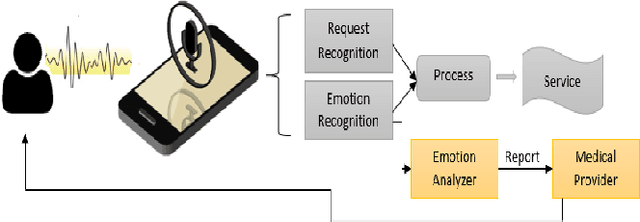
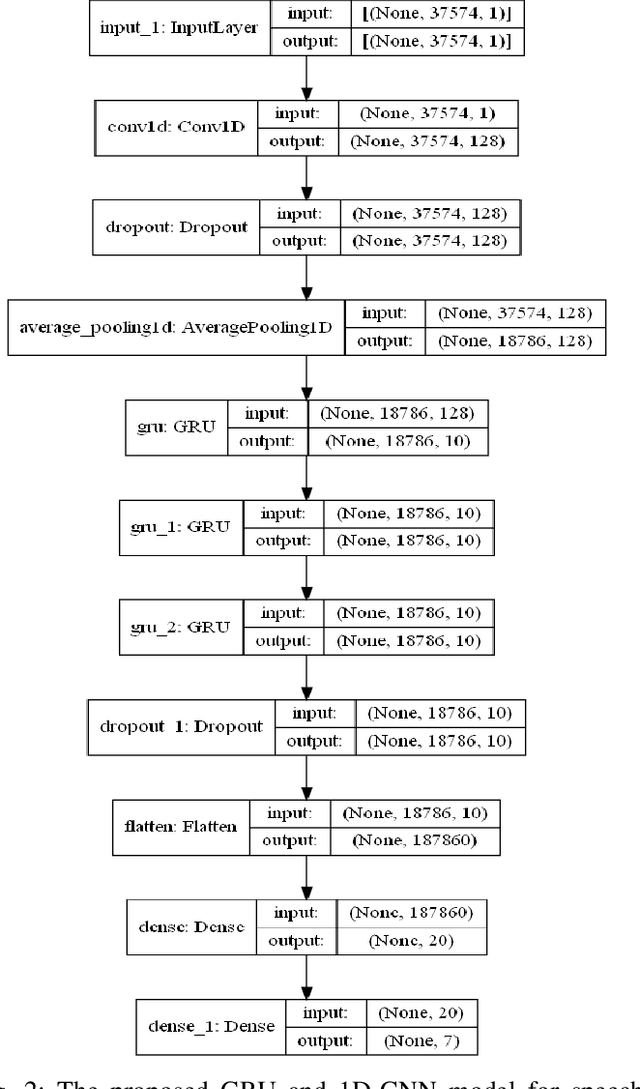
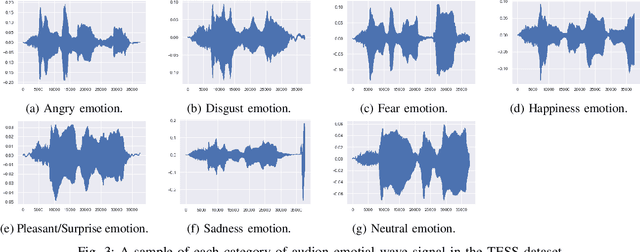
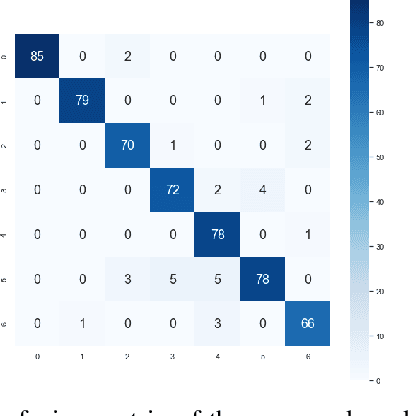
Abstract:Understanding human behavior and monitoring mental health are essential to maintaining the community and society's safety. As there has been an increase in mental health problems during the COVID-19 pandemic due to uncontrolled mental health, early detection of mental issues is crucial. Nowadays, the usage of Intelligent Virtual Personal Assistants (IVA) has increased worldwide. Individuals use their voices to control these devices to fulfill requests and acquire different services. This paper proposes a novel deep learning model based on the gated recurrent neural network and convolution neural network to understand human emotion from speech to improve their IVA services and monitor their mental health.
Review on Action Recognition for Accident Detection in Smart City Transportation Systems
Aug 20, 2022
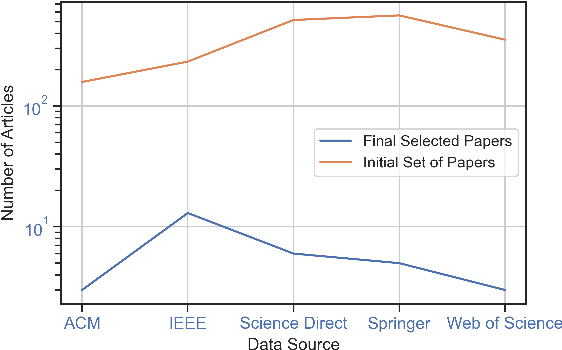
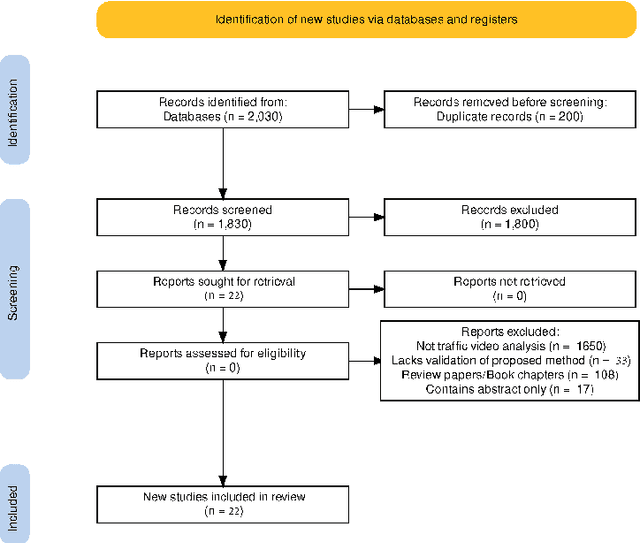
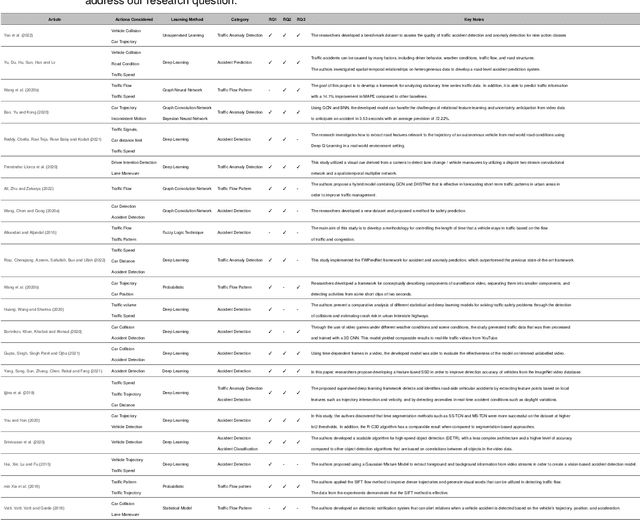
Abstract:Action detection and public traffic safety are crucial aspects of a safe community and a better society. Monitoring traffic flows in a smart city using different surveillance cameras can play a significant role in recognizing accidents and alerting first responders. The utilization of action recognition (AR) in computer vision tasks has contributed towards high-precision applications in video surveillance, medical imaging, and digital signal processing. This paper presents an intensive review focusing on action recognition in accident detection and autonomous transportation systems for a smart city. In this paper, we focused on AR systems that used diverse sources of traffic video capturing, such as static surveillance cameras on traffic intersections, highway monitoring cameras, drone cameras, and dash-cams. Through this review, we identified the primary techniques, taxonomies, and algorithms used in AR for autonomous transportation and accident detection. We also examined data sets utilized in the AR tasks, identifying the main sources of datasets and features of the datasets. This paper provides potential research direction to develop and integrate accident detection systems for autonomous cars and public traffic safety systems by alerting emergency personnel and law enforcement in the event of road accidents to minimize human error in accident reporting and provide a spontaneous response to victims
Vision-Based American Sign Language Classification Approach via Deep Learning
Apr 08, 2022


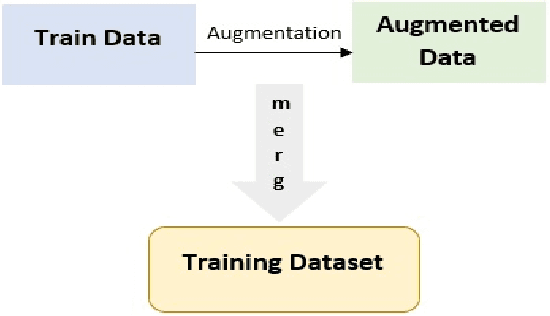
Abstract:Hearing-impaired is the disability of partial or total hearing loss that causes a significant problem for communication with other people in society. American Sign Language (ASL) is one of the sign languages that most commonly used language used by Hearing impaired communities to communicate with each other. In this paper, we proposed a simple deep learning model that aims to classify the American Sign Language letters as a step in a path for removing communication barriers that are related to disabilities.
 Add to Chrome
Add to Chrome Add to Firefox
Add to Firefox Add to Edge
Add to Edge